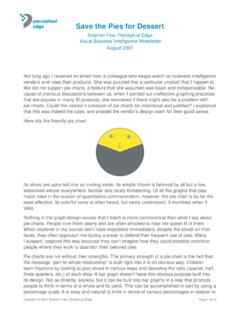Transcription of MEDIA EDUCATION FOUNDATION
1 MEDIA EDUCATION FOUNDATION STUDY GUIDE Killing Us Softly 4 Advertising s Image of Women Study Guide by Kendra Hodgson Edited by Jeremy Earp and Jason Young The MEDIA EDUCATION FOUNDATION | 2 CONTENTS Note to Educators 3 Program Overview 3 Pre-viewing Questions for Discussion & Writing 4 Key Points 5 Post-viewing Questions for Discussion & Writing 9 Assignments 11 Semester-Long Project 14 For additional assignments, please download the Killing Us Softly 3 study guide: For handouts associated with the Killing Us Softly 3 study guide, also download: The MEDIA EDUCATION FOUNDATION | 3 NOTE TO EDUCATORS This study guide is designed to help you and your students engage and manage the information presented in this video.
2 Given that it can be difficult to teach visual content and difficult for students to recall detailed information from videos after viewing them the intention here is to give you a tool to help your students slow down and deepen their thinking about the specific issues this video addresses. With this in mind, we ve structured the guide to help you stay close to the video s main line of argument as it unfolds: Key Points provide a concise and comprehensive summary of the video. They are designed to make it easier for you and your students to recall the details of the video during class discussions, and as a reference point for students as they work on assignments.
3 Questions for Discussion & Writing encourage students to reflect critically on the video during class discussions, and guide their written reactions before and after these discussions. These questions can therefore be used in different ways: as guideposts for class discussion, as a framework for smaller group discussion and presentations, or as self-standing, in-class writing assignments ( as prompts for free-writing or in-class reaction papers in which students are asked to write spontaneously and informally while the video is fresh in their mind). Assignments encourage students to engage the video in more depth by conducting research, working on individual and group projects, putting together presentations, and composing formal essays.
4 These assignments are designed to challenge students to show command of the material presented in the video, to think critically and independently about this material from a number of different perspectives, and to develop and defend their own point of view on the issues at stake. PROGRAM OVERVIEW In this newest update of her pioneering Killing Us Softly series, the first in more than a decade, Jean Kilbourne takes a fresh look at how advertising traffics in distorted and destructive ideals of femininity. The film marshals a range of new print and television advertisements to lay bare a stunning pattern of damaging gender stereotypes images and messages that too often reinforce unrealistic, and unhealthy, perceptions of beauty, perfection, and sexuality.
5 Killing Us Softly 4 challenges students to take advertising seriously, and to think critically about popular culture and its relationship to sexism, eating disorders, and gender violence. To download a folder of JPEG images used in Killing Us Softly 4, click the following link: The MEDIA EDUCATION FOUNDATION | 4 PRE-VIEWING QUESTIONS FOR DISCUSSION & WRITING 1. Do you watch television, listen to the radio or read magazines? If so, why, when, and how often? Which television shows do you watch? Which radio stations do you listen to?
6 Which magazines do you read? 2. How many advertisements do you think you see and hear every day? Where do you see and hear advertisements? Think of as many places as possible. What makes an advertisement stay in your memory? Images? Music? Words? Phrases? 3. What personal care and beauty products do you use on a regular basis? What other products do you use? What brand names are you wearing, carrying, or using right now? What other brand names do you have at home? How do you feel when you use these products? Can you feel this way without these products? Would using different brands of the same beauty products feel different to you?
7 Why or why not? 4. Do you think advertising influences the kinds of products you buy? If yes, how? If no, explain why you think you re able to resist it. 5. What is feminism? What are some common stereotypes about feminists and feminism? Where do you think these stereotypes come from? Do you think these stereotypes can work to discredit the ideas behind feminism? Can you think of other social movements where people were labeled in ways that deflected attention away from the actual issues being addressed? 6. In your view, what does it mean to be a strong woman?
8 Are strong women always feminists? Explain your reasoning. What terms are often used for women who voice strong opinions? How might these terms serve to keep girls and women from voicing their opinions? 7. What does it mean to be feminine, as opposed to masculine? How would you define femininity? 8. What are some typical expectations of women in our culture ? Where do these expectations come from? How fair or accurate do you think they are? And how do they compare with our expectations of men? The MEDIA EDUCATION FOUNDATION | 5 KEY POINTS The Advertising Environment Jean Kilbourne started collecting ads in the late 1960s, inspired, in part, by her involvement with the women s movement, her interest in MEDIA , and her experiences as a model.
9 Kilbourne started to see a pattern in the ads a kind of statement about what it meant to be a woman in American culture . Over the past 40 years, despite the gains of the women s movement, Kilbourne believes advertising s image of women has only gotten worse. Advertising is a $250 billion a year industry in the United States. The average American is exposed to over 3,000 ads every single day and will spend two years of his or her life watching television commercials. Ads are everywhere: schools, buildings, sports stadiums, billboards, bus stops, buses, cars, elevators, medical offices, airplanes, food, etc.
10 Many people feel personally exempt from the influence of advertising. According to the editor in chief of Advertising Age, the major publication of the advertising industry, Only 8% of an ad s message is received by the conscious mind. The rest is worked and reworked deep within the recesses of the brain. Ads create an environment. Just as it s difficult to be healthy in a toxic physical environment, if we re breathing poisoned air or drinking polluted water, it s difficult to be healthy in a toxic cultural environment that surrounds us with unhealthy images and constantly sacrifices our health and well-being for the sake of profit.

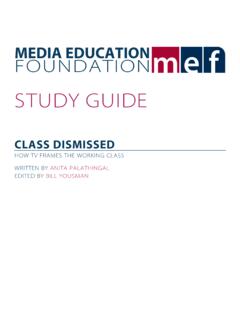
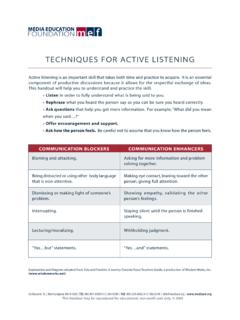
![Tough Guise 2 [Official Transcript] - Media Ed](/cache/preview/c/3/b/5/2/d/3/e/thumb-c3b52d3e6a3437c17d6d8ad6485bd936.jpg)


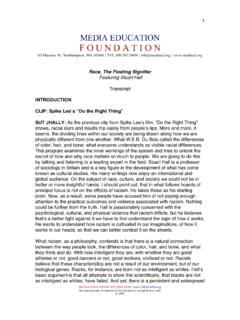
![Requiem For The American Dream [Transcript]](/cache/preview/a/b/8/4/f/8/1/2/thumb-ab84f812664524b6923d6df2929c06cf.jpg)
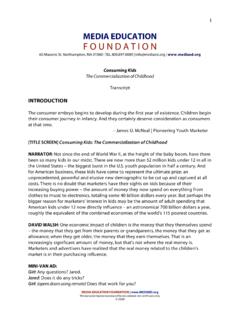
![Advertising at the Edge of the Apocalypse [Transcript]](/cache/preview/d/e/7/c/d/b/4/6/thumb-de7cdb46ab24a926068f936b79251872.jpg)
